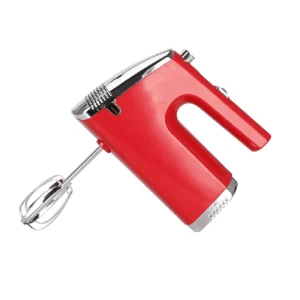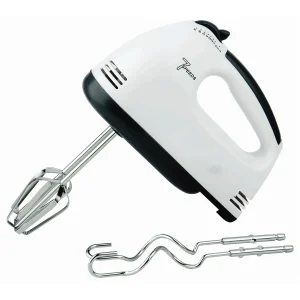What home appliances use the most electricity?
The Impact of home appliance supplier on Electricity Consumption
Before diving into specific appliances, it’s essential to understand how energy consumption is calculated. The amount of electricity an appliance uses depends on several factors, including:
-
Power Rating: This is the wattage (W) or kilowatt (kW) the appliance uses to operate. The higher the wattage, the more electricity it consumes.
-
Usage Duration: How long you use an appliance each day significantly affects its total energy consumption.
-
Frequency of Use: Appliances that are used more frequently, such as refrigerators or washing machines, will generally use more electricity over time.

1. Heating and Cooling Appliances
Air Conditioners
One of the most energy-hungry appliances in most homes is the air conditioner. During hot summer months, air conditioners run continuously to keep the indoor environment cool and comfortable. The high energy consumption of air conditioning systems is primarily due to:
-
Cooling Capacity: The larger the space, the more power the air conditioner requires to cool the area.
-
Energy Efficiency: Older models or poorly maintained units tend to use more electricity than modern, energy-efficient models.
-
Running Time: Air conditioners often run for several hours each day, especially during peak summer.
Space Heaters
Space heaters are commonly used to provide warmth in small rooms. Like air conditioners, space heaters can be very energy-inefficient if used improperly. Here are the main reasons why space heaters use a lot of electricity:
-
High Wattage: Most space heaters use between 1,500 to 2,000 watts per hour.
-
Limited Heating Area: While they are efficient for small spaces, they consume a lot of energy when heating large rooms or running for extended periods.
Electric Water Heaters
Water heaters are another significant contributor to household electricity consumption. Whether it’s for showers, washing dishes, or doing laundry, water heaters consume a large amount of energy, particularly in households that require hot water throughout the day.
| Appliance | Average Power Consumption (kWh) | Annual Energy Use |
|---|---|---|
| Air Conditioner | 2-6 kWh per hour | 1,000 – 2,500 kWh/year |
| Space Heater | 1.5-2 kWh per hour | 1,200 – 3,000 kWh/year |
| Water Heater | 3-5 kWh per hour | 3,500 – 5,000 kWh/year |
2. Kitchen Appliances
Refrigerators
The refrigerator is an essential appliance in every home, but it also accounts for a substantial portion of your energy bill. It runs 24/7 to keep food cold and fresh, making it one of the most energy-intensive appliances. Factors that contribute to its high electricity usage include:
-
Size and Type: Larger refrigerators or units with ice makers and dispensers consume more energy.
-
Age and Condition: Older models tend to use more energy than newer, energy-efficient ones.
-
Door Openings: The more frequently you open the refrigerator door, the harder it has to work to maintain a constant internal temperature.
Ovens and Ranges
Electric ovens and ranges use significant electricity, especially when baking or cooking at high temperatures. Here’s why they are high energy consumers:
-
Heating Elements: Ovens use electric heating elements that consume a lot of power to reach and maintain the required temperatures.
-
Cooking Time: Long cooking times, particularly for baked goods or large meals, can significantly increase electricity consumption.
-
Frequency of Use: Frequent usage, especially for large cooking tasks, leads to more energy consumption.
Dishwashers
Dishwashers save time but are also notable for their high electricity usage. They consume electricity during both the heating of water and the drying process. The primary factors influencing electricity consumption are:
-
Cycle Length: Longer cycles consume more energy, especially if the dishwasher uses hot water.
-
Energy Settings: Some dishwashers have eco-friendly modes that reduce energy consumption, but these cycles often take longer.
appliances blender
While not as significant as large kitchen appliances, a blender is an example of a small home appliance that can still add to your electricity usage. Blenders, especially high-power ones used for smoothies or soups, can use up to 1,000 watts per use, depending on the model.
| Appliance | Average Power Consumption (kWh) | Annual Energy Use |
|---|---|---|
| Refrigerator | 100 – 800 kWh/year | 100 – 300 kWh/year |
| Oven | 2-3 kWh per hour | 600 – 1,200 kWh/year |
| Dishwasher | 1.5-2 kWh per cycle | 350 – 500 kWh/year |
| Blender | 0.5 kWh per use | 20 – 40 kWh/year |

3. Laundry Appliances
Washing Machines
Washing machines are used frequently in most homes, and they can consume a significant amount of electricity, especially when washing large loads or using hot water. The electricity usage depends on several factors:
-
Cycle Length and Type: Longer wash cycles and higher temperatures use more energy.
-
Load Size: Larger loads require more energy to wash and rinse.
-
Energy Efficiency: Modern, energy-efficient washers consume less electricity compared to older models.
Dryers
Electric clothes dryers are another major contributor to electricity bills. Dryers work by using heat to evaporate water from clothes, and the energy consumption depends on:
-
Drying Time: The longer clothes take to dry, the more electricity is consumed.
-
Load Size: Larger loads require longer drying times and, consequently, more energy.
-
Efficiency: High-efficiency dryers use less energy but may take longer to dry clothes.
4. Other Home Appliances
Television and Entertainment Systems
While not traditionally high on the list of electricity consumers, television sets, especially large LED and OLED screens, can consume a considerable amount of electricity if used for many hours daily. Home entertainment systems, including gaming consoles and surround sound systems, can also add to the total electricity consumption.
Small Home Appliances
While small home appliances like toasters, coffee makers, and hair dryers don’t typically consume as much power as large appliances, they can still add to your energy bill when used frequently. The energy consumption of these appliances depends on their power ratings and usage patterns.
How to Reduce Electricity Consumption?
Here are a few tips for reducing the electricity usage of these high-consumption home appliances:
-
Switch to Energy-Efficient Models: Many modern appliances, such as refrigerators, washers, and air conditioners, have energy-efficient versions. Look for the Energy Star label to identify models that consume less electricity.
-
Use Appliances Wisely: Reduce the frequency of use for high-energy appliances like space heaters and air conditioners. When possible, set them to eco-friendly modes.
-
Maintain Appliances: Regular maintenance, like cleaning filters in air conditioners or refrigerators, can improve efficiency and reduce energy consumption.
-
Upgrade Insulation: Proper insulation in your home can reduce the need for heating and cooling, cutting down the energy required by these appliances.
-
Use Timers or Smart Plugs: For appliances that don’t need to be running continuously, use timers or smart plugs to cut off power when not in use.
Conclusion
Home appliances are indispensable in modern living, but they also represent a significant portion of electricity consumption in the average household. Understanding which appliances use the most electricity, such as air conditioners, refrigerators, and washing machines, can help you make more energy-efficient choices. By adopting better usage habits and opting for energy-efficient models, you can significantly reduce your electricity bills and contribute to a greener environment.
